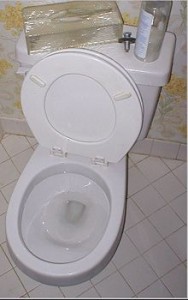Uncovered a link to this article on Facebook today. Unbelievable new way to turn windpower into energy while avoiding every problem associated with traditional wind turbines. The system also uses a two chamber hydro system to store energy. I drew up plans for this exact energy storage system a while back. Good to see that it wasn’t pie-in-the-sky thinking. Anyway, enjoy this article and be sure to check out Discoverynews.com for more stuff like this!
Source: Discovery News
Publication date: October 15, 2010
By Alyssa Danigelis
Noise from wind turbine blades, inadvertent bat and bird kills and even the way wind turbines look have made installing them anything but a breeze. New York design firm Atelier DNA has an alternative concept that ditches blades in favor of stalks. Resembling thin cattails, the Windstalks generate electricity when the wind sets them waving. The designers came up with the idea for the planned city Masdar, a 2.3-square-mile, automobile-free area being built outside of Abu Dhabi. Atelier DNA’s “Windstalk” project came in second in the Land Art Generator competition a contest sponsored by Madsar to identify the best work of art that generates renewable energy from a pool of international submissions.

The proposed design calls for 1,203 “stalks,” each 180-feet high with concrete bases that are between about 33- and 66-feet wide. The carbon-fiber stalks, reinforced with resin, are about a foot wide at the base tapering to about 2 inches at the top. Each stalk will contain alternating layers of electrodes and ceramic discs made from piezoelectric material, which generates a current when put under pressure. In the case of the stalks, the discs will compress as they sway in the wind, creating a charge.
“The idea came from trying to find kinetic models in nature that could be tapped to produce energy,” explained Atelier DNA founding partner Darío Núñez-Ameni.
In the proposal for Masdar, the Windstalk wind farm spans 280,000 square feet. Based on rough estimates, said Núñez-Ameni the output would be comparable to that of a conventional wind farm covering the same area.
“Our system is very efficient in that there is no friction loss associated with more mechanical systems such as conventional wind turbines,” he said.

Each base is slightly different, and is sloped so that rain will funnel into the areas between the concrete to help plants grow wild. These bases form a sort of public park space and serve a technological purpose. Each one contains a torque generator that converts the kinetic energy from the stalk into energy using shock absorber cylinders similar to the kind being developed by Cambridge, Massachusetts-based Levant Power .
Wind isn’t constant, though, so Núñez-Ameni says two large chambers below the whole site will work like a battery to store energy. The idea is based on existing hydroelectric pumped storage systems. Water in the upper chamber will flow through turbines to the lower chamber, releasing stored energy until the wind starts up again.

The top of each tall stalk has an LED lamp that glows when the wind is blowing — more intensely during strong winds and not all when the air is still. The firm anticipates that the stalks will behave naturally, vibrating and fluttering in the air.
“Windstalk is completely silent, and the image associated with them is something we’re already used to seeing in a field of wheat or reeds in a marsh. Our hope is that people living close to them will like to walk through the field — especially at night — under their own, private sky of swarming stars,” said Núñez-Ameni.
After completion, a Windstalk should be able to produce as much electricity as a single wind turbine, with the advantage that output could be increased with a denser array of stalks. Density is not possible with conventional turbines, which need to be spaced about three times the rotor’s diameter in order to avoid air turbulence. But Windstalks work on chaos and turbulence so they can be installed much closer together, said Núñez-Ameni.
Núñez-Ameni also reports that the firm is currently working on taking the Windstalk idea underwater. Called Wavestalk, the whole system would be inverted to harness energy from the flow of ocean currents and waves. The firm’s long-term goal is to build a large system in the United States, either on land or in the water.



